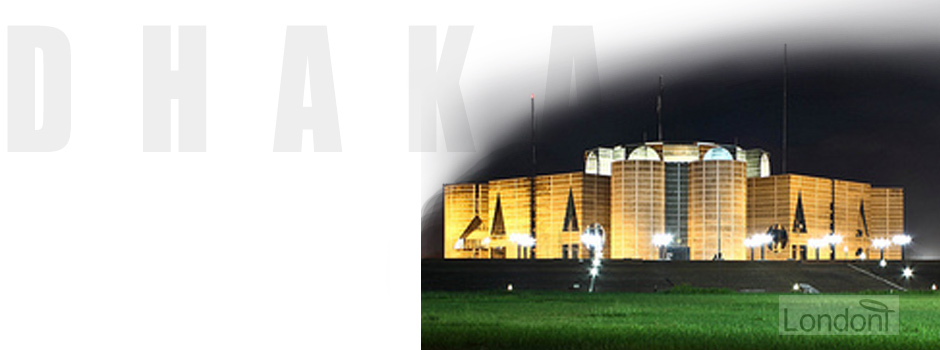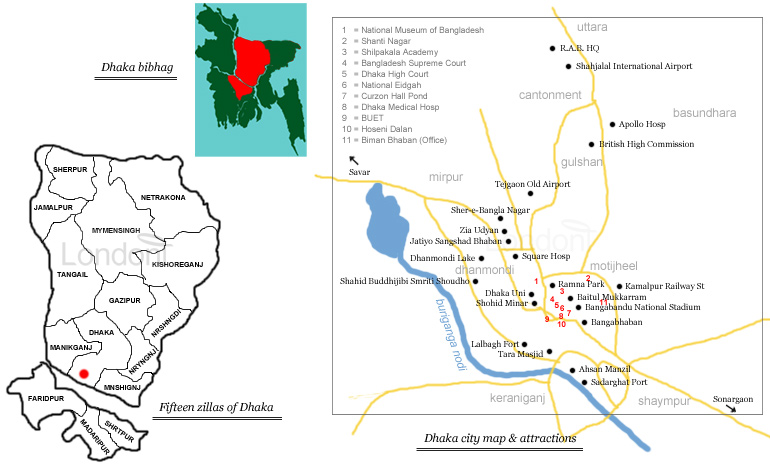
Introducing... Dhaka
Map of Dhaka

Dhaka from the air!
important info, tips, hints... ittadhi
- Dhaka's official website: www.dhakacity.org
- Shah Jalal International Airport telephone:
- Hospital telephone:
- Railway:
- Police Control Room: 639022
- Shops opening hours: 11am - 7pm everyday except Friday when they're closed.
Stay connected.
- Dhaka (Facebook)
- Dhaka - 400 years History in Photographs (Facebook)
- Dhaka City Corporation
- British High Commission in Dhaka
- UNESCO Office in Dhaka
- US Embassy in Dhaka
Londoni is not responsible for the content of external sites.
May Allah bless Dhaka and our People. Ameen.

